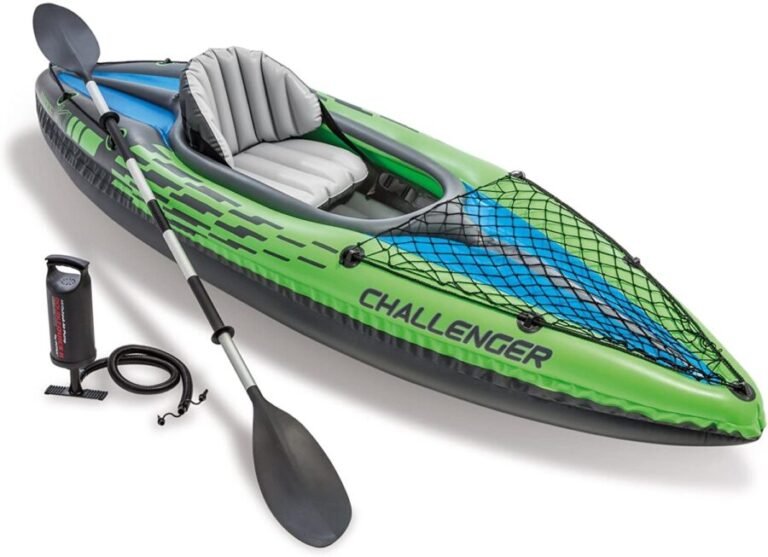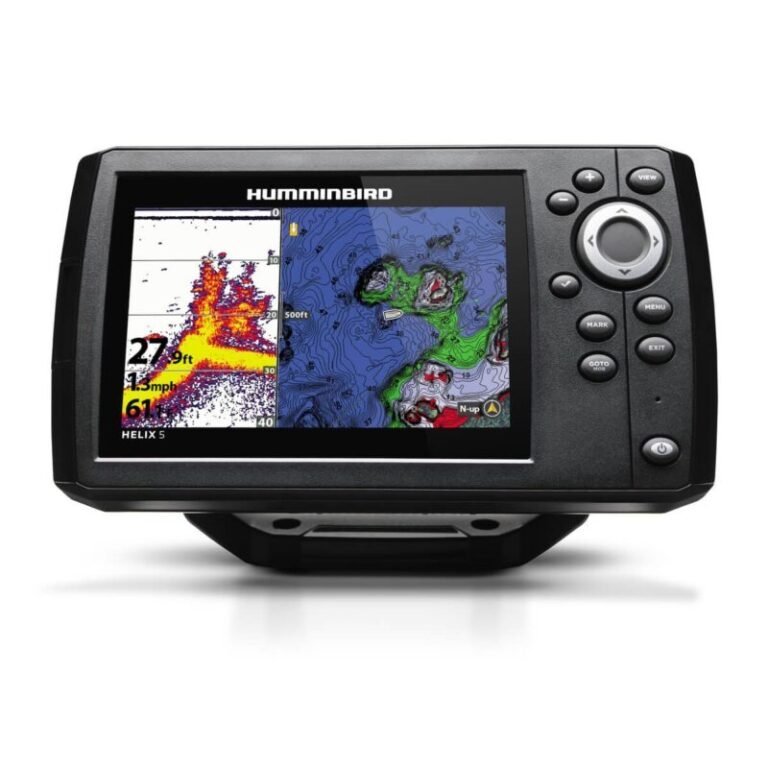Kayak Weight: How Much Does A Kayak Weigh?

If there is anything kayakers consider when scouting for a kayak, its weight would for sure make the list, it’s most likely to top the list of factors that will either encourage or discourage them from going for it.
Many paddlers would readily go for watercraft that won’t pose any difficulty when it comes to transporting to and from the water after use. Kayaking makes an exciting and satisfying outdoor adventure for every water sports lover.
You get the chance to explore some of the most beautiful scenery in the world of water. It gets even more exciting with friends and family around.
However, things might get a little funny when you choose to explore the water alone, especially if you need an extra hand to carry your vessel.
Why You Should Consider How Much a Kayak Weighs
This might not be much of a concern to you if you always go kayaking with a friend, however, it is one of the most important things to consider if you tend to go kayaking by yourself.
If you pick a kayak that weighs too much, then you are more likely going to run into trouble with transporting it.
If you think the weight cannot be much of a big deal because you have a car then you may have to wait until you lift it onto the roof of your car by yourself.
The narrative might be different for someone who has a kayak trailer or a truck plus, most kayaks are easily manageable when two people are lifting them.
There is always an excitement that comes with owning a kayak especially when you are about to buy one for yourself. You can’t wait to hit the waters and get the fun and adventure started, right?
How about thinking about how much it weighs before you get too excited? Remember that you need to carry the kayak to and from the water every single time.
Whether you need to lift it to the roof of your vehicle or lift and walk your ‘yak from your shed to the shore, you’ll want to make sure you can conveniently carry it without breaking your back.
How Heavy Can Kayaks Be
Some kayaks can weigh as low as 30 pounds while others weigh as high as 150 pounds or more. Many variables are at play when it comes to how heavy or light watercraft can be. Such variables could include the brand, materials, size, or length of the kayak.
If there happens to be one way to get valid information, that should be searching online for the model of the kayak of your interest. Once you get that done and over with, you can proceed to a reseller site or better still, the kayak manufacturer’s site.
This is where you can get most of the details of the weight and even how much weight it can hold per time. Kayak weight may vary; depending on what you want to use it for.
Whether you want to use the kayak for fishing or you are a solo paddle. Kayak manufacturers keep end-users in mind by determining their weight limit for maximum efficiency and safety on the water.
This tells you that you shouldn’t exceed your weight limit by choosing a lighter kayak or the heaviest than the average because the weight of your kayak will depend on what it was designed to be used for as well as several other things.
What Can Influence Kayak Weight
Several factors affect the weight of kayaks yet, there are but just a few that play a major role in determining their weight. The materials used for the construction of a kayak and the dimensions of a kayak have a great influence on their weight.
- The construction of a kayak is a great determinant of its weight
The construction of a kayak plays the most vital role in how much it weighs. By implication, what a kayak hull is made of also has a major contribution to its weight. A modern kayak is usually built using four basic ways, with each affecting its weight.
Rotomolded Kayak: These categories of kayaks are constructed or built by melting plastic pellets and molding them into great masterpieces such as kayaks, boats, or canoes.
In the real sense, rotomolded kayaks are solid, one-piece plastic molded kayaks, the cheapest you can find in the market but turned out to be the heaviest to carry or paddle.
Fiberglass/composite kayaks: this category of kayaks has less weight and is lighter than rotomolded kayaks. They are made from fiberglass material which makes them smooth and fast in the water. However, they are more expensive but of better performance.
Thermoform Kayak: the construction of this kayak type involves the concurrent joining together of two separate pieces, the top, and the bottom. The two parts which were initially molded separately will then be joined together as you would do a sandwich.
They are as durable as one-piece rotomolded kayaks and almost as light as fiberglass composite kayaks but of a medium-weight kayaks. It’s a great choice for any paddler who is just starting out and wants an inexpensive, versatile kayak.
Wood Kayak: wood kayaks are fashioned from wood material and waterproof with fiberglass resin for great performance. They can be quite heavy, depending on the fiberglass resin used to waterproof them and the type of wood used for their construction.
Although wood kayaks are beautiful, their major setback is that they are easily damaged and expensive. The material used for the hull of a kayak also determines how light or heavy it will be.
Their hulls are commonly made from materials such as polyethylene which is generally the heaviest. Such kayaks are durable and affordable. Kayaks whose hulls are made with composite material (like carbon fiber and kevlar) are pretty light but expensive.
PVC is another material used for lightweight kayaks, it is lighter than polyethylene but heavier than a composite. Inflatable kayaks and boats are constructed from such polyethylene.
- Kayak’s Dimension is another determinant of its weight
The actual size of any watercraft can affect the weight too. In other words, the size of a kayak and its physical dimensions is also a great determinant of its overall mass. We can therefore say that kayaks of larger size have higher weight while the shorter ones tend to be lighter.
Nevertheless, you cannot conclusively say or think that two boats made from different materials, of the same size, will have the same weight.
The chances that they will weigh the same are obviously very low. And again, the length and width of a kayak can affect its weight. Choosing a shorter or smaller kayak might look like a great idea to cut down on the weight.
While this might sound ideal for beginners, a professional paddler would rather go for a longer one because he/she wouldn’t save some weight to the detriment of its stability, storage space, and tracking performance. So, opting for a shorter hull is like kissing onboard storage space and a better performance goodbye.
How does the kayak function affect its weight?
Kayaks are constructed to serve different purposes. While some paddlers enjoy spending their leisure time on gentle flowing rivers or lakes, that might not be fun for kayakers who love to dissipate energy on rough water.
There are others who want nothing more than a boat that can take them to great fishing spots and secluded fishing holes where they can quietly drop in a line. Each of these activities calls for different forms of kayak.
Fishing Kayaks: Every angler would opt for a boat that can take them to the fish, at least that’s what matters most! Most fishing kayaks are constructed from roto-molded polyethylene and are robust and solid.
Thermoformed polyethylene is used to make some, but the bottom line is that none are constructed to minimize weight.
Fishing kayaks come in different shapes and sizes, yet with the same mission, to easily access and maneuver fishing spots. Fishing kayaks are usually equipped with heavy accessories that can enhance anglers’ activities on the water. These additional fish-finding equipment also mean one thing, additional weight.
Inflatable Kayaks: They are constructed using flexible tubes containing pressurized air. Materials like PVC and Hypalon or Neoprene are commonly used to construct inflatable boats or kayaks.
Their greatest advantage over their counterpart is that they are lightweight. They are a great option for short-distance maneuvering or transport in case of emergencies.
There’s no doubt that this group of watercraft offers exciting outdoor adventures on the water, it is also capable of taking on all styles of paddling across both rough and flat waters. To say the least, a modern inflatable kayak would perform as well as its hard shell counterparts.
Recreational Kayaks: They are designed for all-around use on the water. Recreational kayaks are usually constructed from material like polyethylene, they are heavy but less expensive.
One significant feature is the extra width, causing more drag and contributing to the heavier weight. One of their downsides is the lack of skags and rudders that make for easy maneuvering.
This group of kayaks is ideal for beginners and other people who paddle primarily on slow-moving streams and lakes, we could say that this group of kayaks captures typical kayak use.
Sea Kayaks: The typical definition of sea kayaks would be “longer and narrower”. They can be constructed with various combinations of fiberglass, carbon fiber, and other space-age materials.
These kayaks are used by experienced kayak enthusiasts who embark on long-distance, open voyages and expeditions lasting days or even weeks. They are otherwise called performance kayaks, the longest of all, with length contributing to their weight.
They have streamlined hulls and they are long, narrow, and sit low in the water. These features have given them superior straight-line tracking.
Whitewater kayaks: Before now, most whitewater kayaks were constructed from light, tough, and durable materials like fiberglass and resin composites. But today many kayak builders now use strong plastics to make whitewater kayaks.
While plastic boats are highly durable they can be heavy to carry. Even though whitewater kayaks are super short, the longer ones naturally weigh the most.
Whitewater kayaks do well on rough waters and rapid streams, this calls for shorter kayaks with manageable hulls. They are durable and pretty light.
How Much Does a Tandem Kayak Weigh?
Tandem kayaks are designed with two cockpits such that two people can paddle together at once. Although Paddling with a friend or family can be more enjoyable and exciting nevertheless, steering can be more difficult when two people paddle the same boat.
Since tandem kayaks are longer than average kayaks, they are usually twice as heavy as recreational kayaks. Most tandem kayaks you get to see can weigh between 50-75 pounds, you are more likely to see more of the ones that weigh around 65 pounds.
Due to materials and the accessories that some are made with, they may weigh as much as 100 pounds. The length of any kayak plays a significant role in how much it can weigh, more reason why tandem kayaks weigh more than recreational kayaks.
Tandem kayaks are naturally twice as long as recreational kayaks with lengths around 18-24 feet long and widths between 18-24 inches. Since it takes two people to paddle them, transporting them would be quite easy because they’ll both have the weight shared between them.
How Much Does a Recreational Kayak Weigh?
Recreational kayaks are usually designed with a large cockpit, so paddlers can easily get in and off them. Usually meant for recreational and casual paddlers who love kayaking in or around flatwater streams or lakes. They are durable, stable, and mostly made of polyethylene plastic.
A recreational kayak is usually called a single kayak, weighing around 30-50 pounds. For the most part, most recreational kayaks weigh around 35 pounds, this depends largely on the material used for constructing them. They are usually wider than 24 inches, with lengths less than 12 feet.
Though recreational kayaks might not be the lightest option, transporting or carrying them around is never a difficult task for paddlers. You can simply place the cockpit rim sideways on your shoulder and you are good to go.
How Much Does a Fishing Kayak Weigh?
Fishing kayaks aren’t designed to move at high speeds or long distances like a recreational or sea kayak, instead, they are constructed for pristine stability when floating in the water. That way, anglers can comfortably sit while casting their fishing line or reeling their fish in.
Without mincing words, most fishing kayaks are heavier than recreational kayaks. Extra accessories like fishing gear, tackle boxes, storage boxes, and the like add to their weight.
A few may weigh as little as 35 pounds, but in most cases, they weigh above 100 pounds with some even as high as 200 pounds.
Most fishing kayaks’ lengths fall between 10-24 feet and can be as wide as 35 inches, usually less though. You’ll need some help to carry fishing kayaks to and from the water since they are one of the heaviest kayaks.
How Much Does an Inflatable Kayak Weigh?
As the name implies, a kayak inflated before use and deflated after use is called an inflatable kayak. Designed for easy carrying, easy storage, and easy kayaking. Lots of work has been recently put into inflatable kayaks and one would wonder how durable and stable they have become.
They do not weigh as much as your average kayak and since they are not designed with a hard shell they have become the lightest kayak around. They can weigh anywhere from 20-50 pounds, with the common ones weighing 30 pounds.
How much it weighs depends on how large it is, the accessories, and the material used in making it. Basically, one person will conveniently carry an inflatable kayak.
Paddling an inflatable kayak demands that you gather enough energy by resting before hitting the water since you have used more to inflate your kayak.
How Much Does a Sea Kayak Weigh?
Unlike recreational kayaks that are great choices for beginners, a Sea kayak is designed for more advanced paddlers and sports enthusiasts. It has a smaller cockpit and enough space for equipment for a long trip. Sea kayaks are built to withstand heavy currents, wind, and waves.
Most sea kayaks weigh around 40-60 pounds, with the common ones weighing around 50 pounds. Now this will depend on how much equipment you bring on board since they are great for long-distance and multi-day voyages.
Normally, the length of a single sea kayak can be between 12-17 feet while a tandem sea kayak can be up to 25 feet long with a width of 20-35 inches.
Does Kayak Length Affect Its Weight
The length of a kayak plays a major role in how much it will weigh. You can prove this by taking two identical kayaks (constructed with the same material though) and comparing their weights.
You’ll be shocked to find out that the longer one weighs more. You may want to ask why, right? Think about it, it takes more material to make a longer kayak, so additional material used or needed to make it longer will naturally increase its weight.
Having established that fact, you should also remember that the weight of a longer kayak is not as evenly centered as with a shorter kayak. You tend to realize this more when you try to lift it by yourself, now that makes complete sense.
The added weight comes with an advantage though, aside from the fact that you have plenty of space, a longer kayak tracks much better. The downside is that paddling might be a little harder with the shorter ones. So yes, the length of a kayak does affect the weight.
By now you must have a firm idea of how much different kayaks weigh, from fishing, inflatable, tandem, and recreational to sea kayaks. You also must have discovered the factors that influence their weight more.
Whether you want to find a kayak for yourself or you want to learn more about them, you are in the right place to get all the help that you’ll need.






